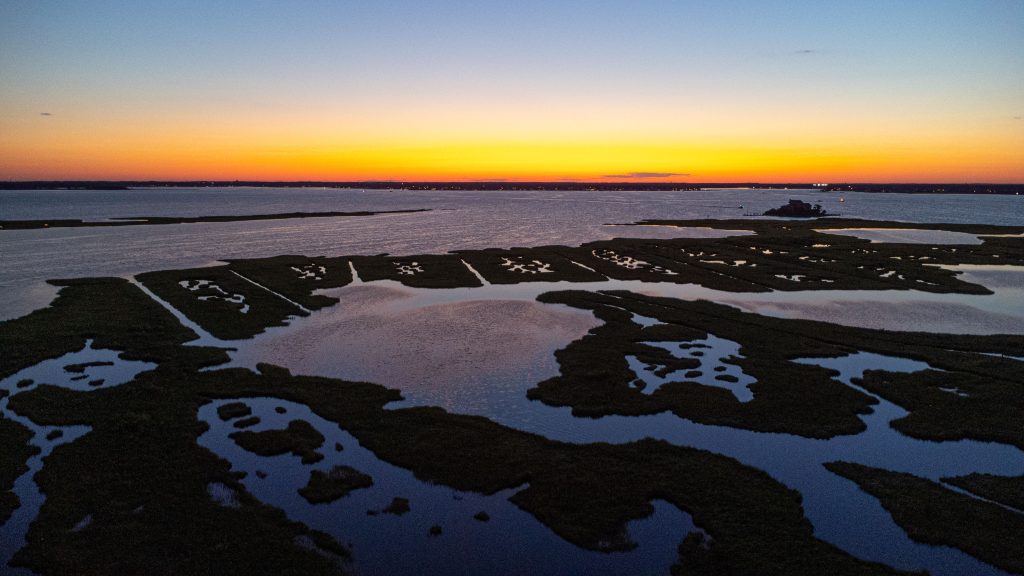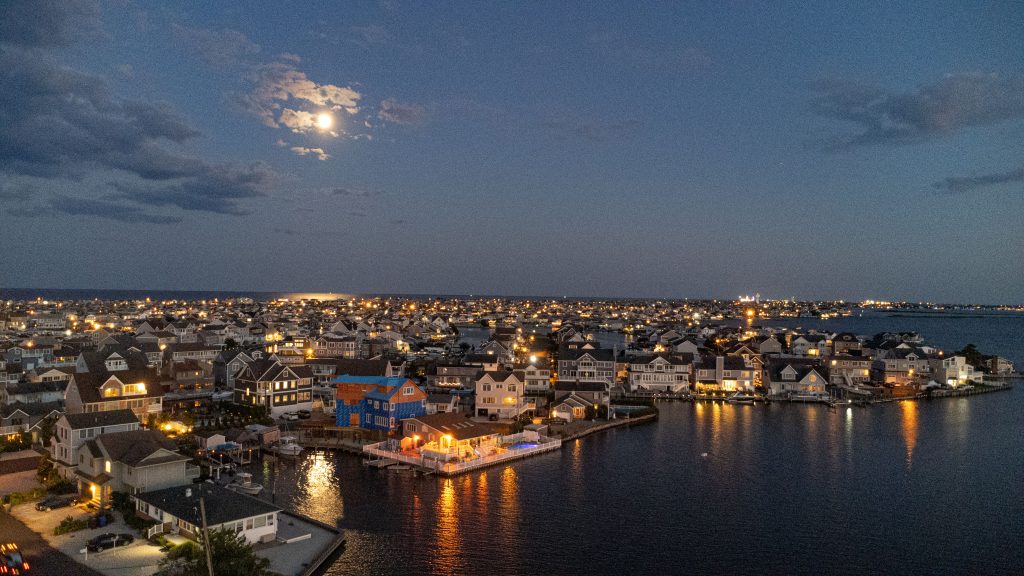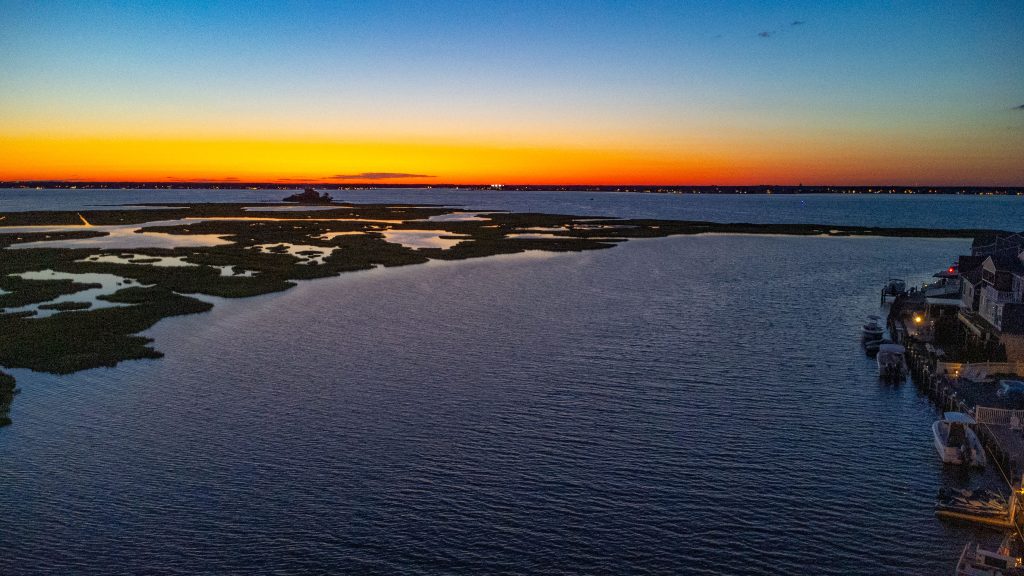Despite some clouds and scattered thunderstorms, night owls this weekend may have noticed the intensity of the moonlight – either shining through one’s bedroom window or glistening off the bay or ocean.
We, of course, had to check out the sunset Sunday night along the bay, and noticed the continuing trend. Indeed, things will come to a head on Tuesday, when the year’s first “supermoon” will appear, only to be followed by a more rare “blue moon” later in the month.
Weather-wise, it’s going to be a perfect sky-viewing week. Each day is forecast to be clear, with temperatures in the low 70s at night. According to NASA, a supermoon occurs when the Moon’s orbit is closest (perigee) to Earth at the same time the moon is full. In these circumstances, the moon appears brighter and larger than a regular full moon – hence the phrase “supermoon.”
It’s worth noting, for local purposes, that tides will likely be running high (and low) this week, in line with most full moons, however there may be a slight increase in the amount of water that flows in and out of the back bays.
The best time to view the “supermoon” will be closest to moonrise, when it will appear to be at its largest – though later at night, it may appear at its brightest. Moonrise occurs at 7:56 p.m. Tuesday, so taking in a sunset and a supermoon all-in-one will be your best bet to get the most out of an after-dinner trip to the beach or bay.
Super Blue Moon
We’ll most certainly follow up with another article later this month on the topic of a rare “super blue moon,” but it’s worth mentioning while we’re on topic.
Again, according to NASA, this phenomena has not occurred since 2009, and the next one will not be seen until 2032. This will occur Aug. 30-31, 2023 and reach peak illumination at 9:36 p.m.
A “blue moon” isn’t exactly blue in color, but is more of a colloquial phrase that indicates a rare event. Blue moons occur when there is an “extra” full moon in a given month thanks to how the calendar works out. This occurs once every two to three years. But a “super” blue moon occurs when a regular “blue moon” and a “supermoon” occur simultaneously.


Police, Fire & Courts
South Toms River Man Charged in Violent Murder of Wife

Police, Fire & Courts
Toms River Man Sentenced to Prison for Assault, Eluding, Robbery, Threats










